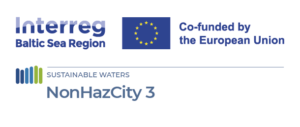Consumer
Hazardous substances are everywhere in our daily life. They mean to provide specific properties to different products (plastic elasticity, water resistance, antibacterial properties, etc.) but as a side effect they can harm nature and human health. Hazardous substances are present in different product groups where we never expect to find them. It can be personal care products, household cleaning products, toys for children, furniture and many other articles we use every day.
Hazardous chemicals in products may enable such functions and properties as colour, dirt resistance etc., therefore they are sometimes needed for a product to work well. Some hazardous chemicals are allowed because their risk can be managed by wearing gloves or not ingesting large amounts of substances which are not supposed to be eaten.
However, there may be risks from so-called “combined exposures” that may occur from many different sources and consist of many different substances. They may cause negative effects, even though the exposure levels to the individual substances are regarded as safe.
Because of the stricter EU regulation of hazardous chemicals use in the products, manufacturers are shifting their production to the non-EU countries. Even though similar regulations exist for imported goods, the controlling ability of our institutions is limited. This is why prohibited hazardous substances (e.g. lead in toys) or regulated substances in higher concentrations (e.g. formaldehyde in hair dyes) which can be identified only through laboratory analysis, may exist in imported products. For this reason it is useful to be aware what are the imported goods which most often prove to contain prohibited hazardous substances during routine inspections. By knowing this information you can avoid the use of these substances as much as possible in order to protect yourself and your children from chemical risks.

